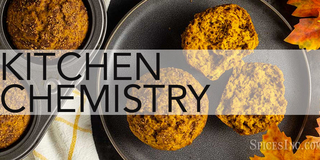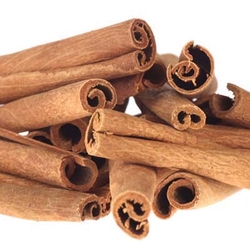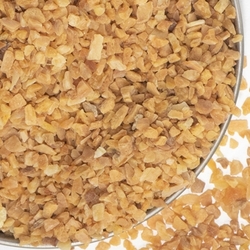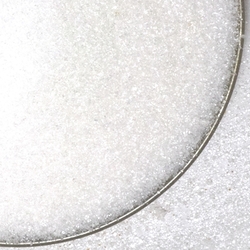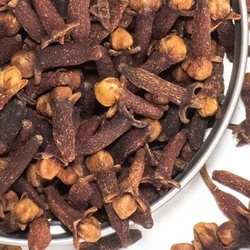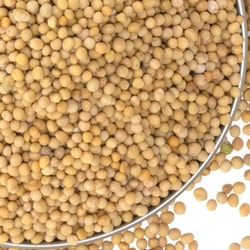Kitchen Chemistry
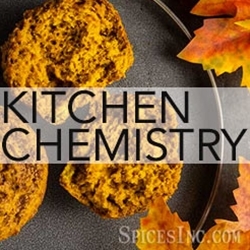
Table of Contents
What is Kitchen Chemistry?
When thinking about food, the concept of cooking instinctively and a chef wielding mastery of a type of sensorial artistry can be a beautiful image. While the process of creating a delicious and visually stunning meal might feel like magic, the understanding of how raw ingredients can be transformed can (at least in some part) be explained by understanding the fundamentals of what we'd like to call Kitchen Chemistry. Though people often seek to avoid "chemicals" in their food, the fact is chemicals just refer to anything that is composed of matter- and not anything inherently toxic or artificial- and the process of cooking food with heat actually changes the composition of its ingredients.
How Has Cooking Changed?
As humans evolved, the "discovery" of fire and the realization that it could be harnessed as a way to cook food was one of the key factors for our success as a burgeoning species. While fire has been around as long as there's been fuel and oxygen, the harnessing of fire gifted the ability to heat proteins, kill bacteria, and make relatively inedible food like tough pieces of meat…. tasty. Beyond the flavor factors, cooking food also helps humans break down relatively undigestible items so that they could actually be absorbed by the body and receive some sort of nutritional value, as well as relieve some of the strain of the digestive tract. The more food our ancestors could eat meant the more calories we would have at our disposal to provide energy and ensure survival.
As humans evolved, the technology developed and techniques have also vastly evolved, and some of the fancier trends this century has witnessed are cryovacking foie gras and aerating flavor mists to create a more sophisticated gastronomic experience. But there are a number of cooking techniques that remain just as reliable and delectable as they were 5,000 years ago, and whether it's unlikely the original creators of these recipes understood the chemical and molecular changes taking place in their food, through trial and error they were able to refine the process to achieve their dishes.
Who Knew Pickles Were So Sophisticated?
In the warmer months, one of the incredible things about science is that it gives us the power to preserve foods so that we can enjoy amazing, tasty, nutritious produce all year round. Though we've seen a strange type of renaissance in embracing the tradition of pickling, it's important to remember that if you are diving into canning at home (whether it's pickling, fermenting, or just jarring some green beans) that you make sure you are following the directions of a reputable resource and taking seriously their advisement on temperature, ratios, and processing times. If improperly canned, produce can easily grow botulism if canning is not done in a sterile or well-monitored cooking environment. This is especially true for low-acid produce, such as vegetables. If done properly, many recipes for at home preservation processes can be stored for months in your refrigerator (if it can last that long without you eating it), such as a great and easy Kimchi Recipe.
It is truly remarkable how many foods are able to be pickled, with the only limitation being a basic understanding of sanitation procedures and ensuring a properly tested brine to kill the "bad" kind of bacteria. Beyond their flavor, spices can actually play a part in the pickling process itself as they can have antimicrobial effects. Some of these spices are mustard seed, garlic, cinnamon, cloves, and bay leaves. If you don't have whole spices on hand and would rather someone else do the work of figuring out what goes great together, we have a couple of pickling blends we've experimented with on some Zickles. Though some canning instructions might call for the use of additional Citric Acid to lower the pH of your haul, another type of acid already present in some spices like mustard and bay leaves is Tannic Acid. Unlike stronger acids, tannins actually help to hold the integrity of cells as they age, meaning that it helps to ensure a good crunch to a 6-month-old pickle.
Beyond what it can do to help prolong food and preserve it, acid is also an invaluable ingredient for growing food as well. Where an ingredient is grown can massively affect its pH and acidity depending on the soil it is grown in, and can affect its flavor, color, and shape. Because of this, there are hundreds of products that are certified as DOP (translated from Italian meaning "Designation of Origin") or AOC (which is the same concept, but applied to French wines) and indicates that they must be cultivated and produced in a specific area of the world. Some of the most common and often imitated of these ingredients include Champagne, San Marzano Tomatoes, and Hatch Chile Peppers.
What's The Difference Between Baking Soda and Baking Powder, and Why Does it Matter?
Though high-tech cooking applications might be out of the realm and mind of the day to day home cook, one form of kitchen chemistry that almost everyone has had a personal experience (and perhaps varying success) is the art of baking. Unlike other cooking categories where ingredients can be fudged and substituted, baking tends to be a more precise system of measurements and ingredient weights prepared in a specific way and heated in a specific way. It might seem daunting looking at a baking recipe knowing the importance of following these directions, but instead think about them as a pathway of success.
One of the most interesting examples of how baking has evolved is the readily available household staple of Baking Soda! Baking Soda is a leavening agent used in baking that is activated as it reacts with acids such as lemon, honey, buttermilk, and yogurt. Before sodium bicarbonate was available, most people would have to depend on a reaction "Brewer's Yeast" and other types of fermentation, or techniques such as stiffly whipping egg whites to encourage lift in their batters. Besides tasting strongly of yeast, these recipes would have an even higher risk of temperamental failure associated with temperature and humidity.
Baking Powder is baking soda, but as Carla Lalli Music puts it, "It has the Power." Baking Powder can be used even when food doesn't already have an acidic ingredient to activate it, so it's mixed with its own powdered acid (such as cream of tartar, another baking staple) that creates a chemical reaction. This reaction is referred to as "Double Acting" for Baking Powder as it reacts twice- once when it's mixed with moisture in a wet batter, and again when it's heated in the oven.
Baking soda and baking powder react when heated in order to release very teensy tiny amounts of carbon dioxide that creates bubbles and causes food to rise. Part of the reason that it reacts this way with acid is that it sits on the opposite side of the pH scale and is alkaline, and this is called an acid-base reaction. Because it is alkaline, it can also be added to tone down harsher acidity and tartness. It also means it can also be used in small amounts to help neutralize the effects of heartburn or acid reflux, which is caused by indigestion of acidic foods. One of our best examples of taking advantage of the benefits of both Baking Soda AND Baking Powder is our recipe for Pumpkin Muffins with Spiced Sugar.
Even if you consider yourself the most casual of home cooks, chances are, you are probably already applying and enjoying the principles of what makes food magical and transformative. Instead of wielding a beaker and wearing lab coat, you've been stirring a pot and wearing an apron! Everytime you dollop a scoop of batter into a baking tin and pull out a cake, or crack open a jar of Saurkraut and see a few tiny bubbles fizz, you're enjoying the labors of your very own Kitchen Chemistry!
Read More
What's the Difference Between Pickling and Fermenting?
The Origin of Hatch Chile Peppers

